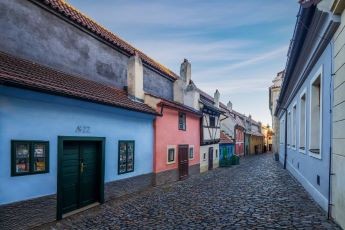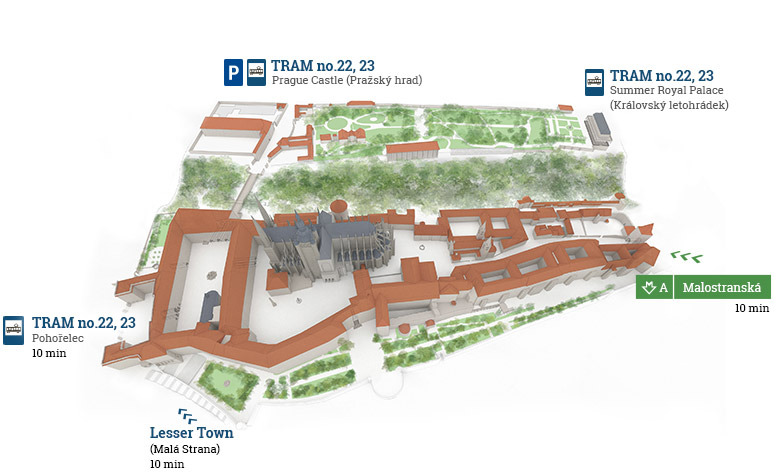Golden Lane
Tours for visitors
One of the iconic places of Prague Castle – the Golden Lane – was created at the end of the 15th century, after the construction of the new northern castle fortifications. The picturesque place with colorful houses abounds in many legends and myths, which have also attracted a number of writers and artists. Among other things, e.g. the famous Franz Kafka lived here. At the moment, several houses house an exhibition that shows life in the alley during its 500 years of existence.

The new castle fortifications gave rise to a modest dwelling, which today is the last remnant of the small buildings of Prague Castle. For example, castle shooters, a family or goldsmiths lived here. The houses were inhabited until the Second World War, but already during the First Republic, care was taken to ensure that the picturesque character of the street was not changed during the renovations. The last residents moved out in 1953.
House No. 13, the Renaissance abode of the castle gunner, best shows the form of the dwelling from the 16th century. In the adjacent house No. 14, a model of a pre-World War II dwelling can be viewed. During this period, the renowned card reader and clairvoyant Matylda Průšová lived here. The writer Franz Kafka lived and wrote in house No. 22 during the First World War. In house No. 12, film historian and collector Josef Kazda hid copies of Czechoslovak films that the Nazis had intended for liquidation. The exhibition in the house thus symbolically includes a projection screen, and visitors can thus watch films depicting Prague Castle in the early days of cinematography. The staircase in house No. 12 leads to the terrace in front of the Daliborka tower. The cylindrical cannon tower was part of the Jagiellonian fortifications, and its lower floor was used as a prison from the beginning. The first and at the same time the most famous prisoner was the knight Dalibor from Kozojed in 1498.
Today's form of Zlatá ulička was significantly influenced by the famous artist Jiří Trnka. The facades of the houses were painted according to his design from the 1950s.










